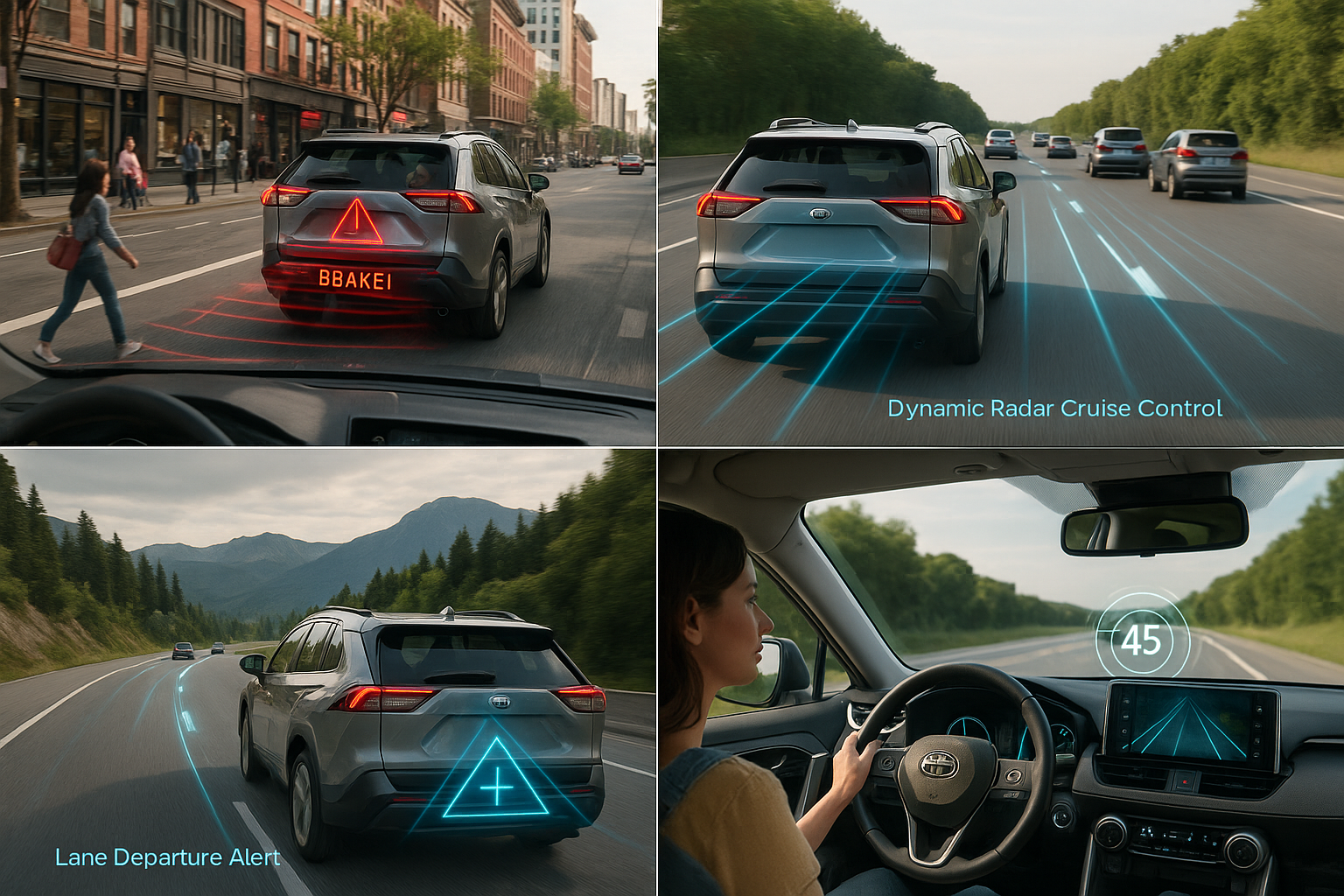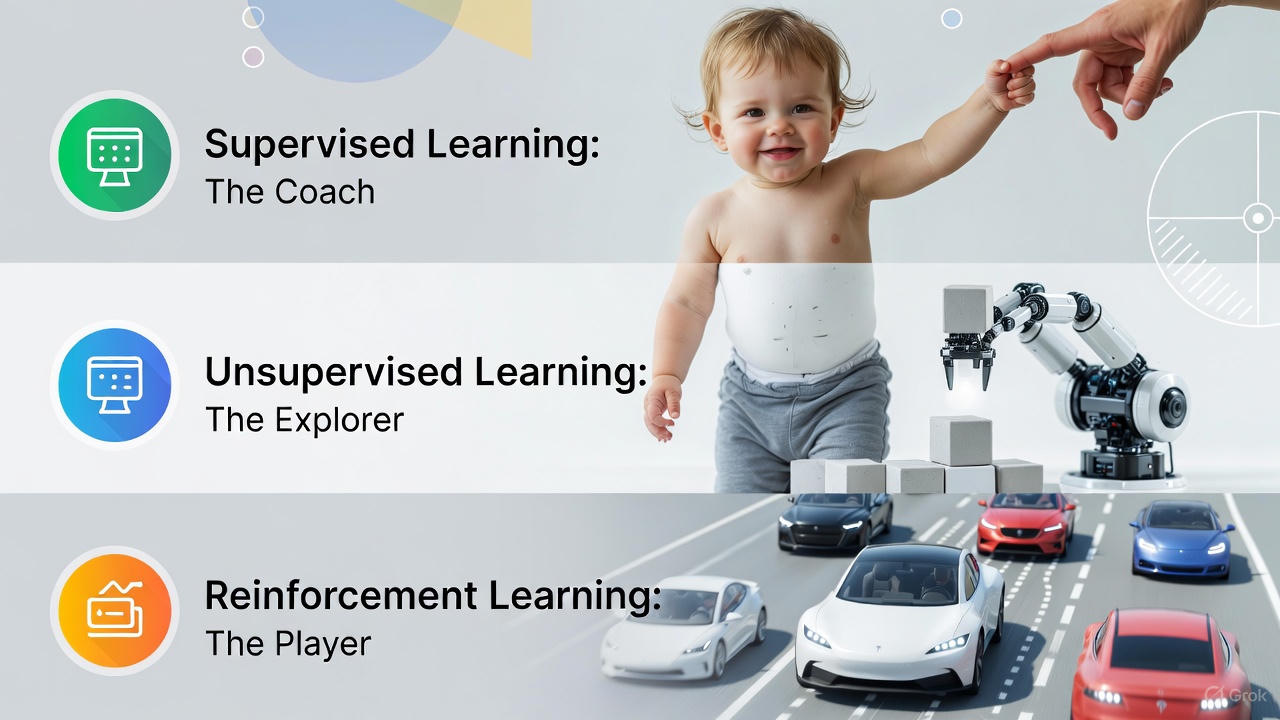After my wife bought a RAV4 XLE 2025, I decided to explore its built-in safety features—something I had often ignored in the past. What I discovered was not only specific to Toyota, but also common across many modern vehicles. These safety technologies, often bundled into what manufacturers call “driver assist systems,” can quietly make driving safer, smoother, and a whole lot less stressful—if you know how to use them. Features like these are especially useful for older people, helping them stay confident and independent behind the wheel.
So here’s my easy-to-follow guide to understanding these systems, what they actually do, and how to get the most out of them—whether you drive a Toyota, Honda, Ford, Subaru, or any other brand offering similar features.

🤖 Breaking Down 5 Common Driver Assist Features (In Plain English)
What do all these abbreviations and tech terms mean for someone who just wants a safer drive? Let’s make it simple.
1. Pre-Collision System with Pedestrian Detection (PCS w/ PD)
🛑 What it does: If the car thinks you’re about to hit another vehicle or a pedestrian, it beeps and may automatically apply the brakes.
👀 How it works: It uses a mix of radar and a camera to detect people, bikes, and cars.
🚗 Real-life use: You’re distracted for a moment and the car in front stops suddenly—your car beeps and slows down before you even react.
💡 Tip: Keep your windshield and front badge area clean. That’s where the sensors live!
2. Dynamic Cruise Control / Adaptive Cruise Control (DRCC or ACC)
🛣️ What it does: Like regular cruise control, but smarter. It adjusts your speed to keep a safe distance from the car ahead.
🧠 How it works: A front radar tracks the vehicle in front and slows down or speeds up as needed.
🚗 Real-life use: Set your speed to 65 mph on the highway. Someone ahead is slower? Your car matches their speed automatically. When they move, your car returns to the set speed.
💡 Tip: Adjust the following distance with a button on the steering wheel—closer for city traffic, farther for highways.
3. Lane Departure Alert with Steering Assist (LDA w/ SA)
↪️ What it does: If you drift out of your lane, your car beeps—and gently nudges the steering wheel to get you back.
👁️ How it works: Cameras read the lane markings on the road.
🚗 Real-life use: You’re feeling sleepy and veer slightly—your car buzzes and steers you back into your lane.
💡 Tip: This only works at higher speeds and on well-marked roads. Don’t expect it to help in narrow or unmarked lanes.
4. Lane Tracing Assist (LTA)
🎯 What it does: Works with cruise control to help your car stay centered in its lane—even around curves.
🧠 How it works: Cameras track the road lines, and the system adjusts steering to keep you in the middle.
🚗 Real-life use: On a long drive, your hands are on the wheel, but the car gently assists around bends. It’s subtle but reassuring.
💡 Tip: This feature needs your hands on the wheel—if you let go, you’ll get alerts.
5. Road Sign Assist (RSA)
🪧 What it does: Detects road signs (like speed limits or stop signs) and shows them on your dashboard.
👀 How it works: A forward-facing camera reads the signs and pops them up in front of you.
🚗 Real-life use: Missed the last speed limit sign? Your dash has your back.
💡 Tip: Especially helpful when driving in unfamiliar areas or on winding rural roads.
🎆 Bonus Feature: Automatic High Beams (AHB)
🔦 What it does: Automatically toggles between high and low beams depending on traffic.
🚗 Real-life use: You’re alone on a dark road? High beams come on. Another car appears? Back to low beams.
💡 Tip: Turn it on via the headlight stalk and let your car handle the rest.
🛡️ How These Features Compare with Other Cars
Many automakers offer similar safety systems under different brand names:
| Feature | Toyota Safety Sense | Tesla Autopilot | Honda Sensing | Ford Co-Pilot360 | Subaru EyeSight |
|---|---|---|---|---|---|
| Adaptive Cruise Control | Yes, with stop-and-go | Yes, very advanced | Yes | Yes | Yes |
| Lane Departure Warning / Assist | Yes, with steering assist | Yes, with auto-steering | Yes, with lane keeping | Yes | Yes |
| Pre-Collision Warning / Auto Brake | Yes, with pedestrian detection | Yes (vision + radar) | Yes | Yes | Yes |
| Lane Tracing / Centring Assist | Yes | Yes (part of full Autopilot) | Limited | Optional (higher trims) | Yes |
| Road Sign Assist | Yes | Not yet | No | No | No |
| Auto High Beams | Yes | Yes | Yes | Yes | Yes |
🧠 Verdict: While Tesla’s tech is more advanced in automation, systems like Toyota’s, Honda’s, or Subaru’s offer impressive features at no extra cost—often standard in even mid-level trims.
👨🔧 Final Thoughts: Safety Doesn’t Work Unless You Use It
These systems are like having a co-pilot with eagle eyes and super-fast reflexes. But like any co-pilot, you need to know what they do and how to work with them.
Here’s what I recommend:
- Practice each feature: Try one system at a time on a familiar route.
- Trust but verify: These systems assist—they don’t replace your attention.
- Check your settings: Dive into your car’s menu and personalize alerts and sensitivity.
🧠 Summary
Whether you drive a Toyota RAV4, a Honda CR-V, a Ford Escape, or a Subaru Outback—your car is smarter than you think. It’s got your back, but only if you understand what it’s doing.
So next time you’re on the road, take a moment to appreciate your silent co-pilot. Because being aware of these features doesn’t just make you feel safer—it actually makes you a better driver.



Leave a Reply